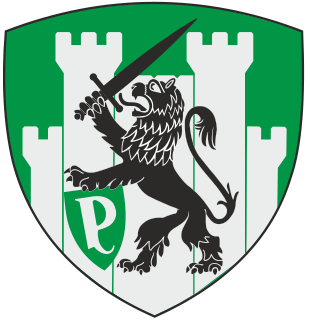 W
WThe Estonian War of Independence, also known as the Estonian Liberation War, was a defensive campaign of the Estonian Army and its allies, most notably the White Russian Northwestern Army, Latvia, and the United Kingdom, against the Soviet Western Front offensive and the aggression of the Baltische Landeswehr. It was fought in connection with the Russian Civil War during 1918–1920. The campaign was the struggle of Estonia for its sovereignty in the aftermath of World War I. It resulted in a victory for the newly established state and was concluded in the Treaty of Tartu.
 W
WArtillery Battalion of the 1st Infantry Brigade, formerly the Artillery Group, is an artillery battalion of the Estonian Defence Forces, based out of Tapa Army Base. The unit is part of the Estonian Land Forces. It is tasked with supporting combat units with indirect fire during war-time.
 W
WThe Baltic Landwehr or Baltische Landeswehr was the name of the unified armed forces of Couronian and Livonian nobility from 7 December 1918 to 3 July 1919.
 W
WDanish-Baltic Auxiliary Corps was a Danish company of military volunteers, established 1919 as a non-governmental initiative to help in the Estonian and Latvian war of independence. It was originally planned to send several companies to help, but due to the success of war, only one company was sent, Compagnie Borgelin. The company consisted of approximately 200 men with Captain Iver de Hemmer Gudme as corps commander and Captain Richard Gustav Borgelin as company commander. DBAC left 26 March 1919 for Hanko in Finland on board the Finnish ship M/S Merkur.
 W
WEngineer Battalion is a combat engineering battalion of the Estonian Defence Forces, based out of Tapa Army Base. The unit falls under the command of 1st Infantry Brigade of Estonian Land Forces.
 W
WThe Estonian Defence League is the name of the unified paramilitary armed forces of the Republic of Estonia. The Defence League is a paramilitary defence organization whose aim is to guarantee the preservation of the independence and sovereignty of the state, the integrity of its land area and its constitutional order.
 W
WThe Logistics Battalion is the main central unit of the Support Command of the Estonian Defence Forces which provides various logistical support. This battalion has a logistical role in the Estonian Defence Forces along with Combat Service Support Battalions of the Infantry Brigades of Estonian Land Forces.
 W
WNames in Marble is an Estonian war novel written by Albert Kivikas. It was published in 1936, and its subject is the Estonian War of Independence. Kivikas received an award by the Estonian Literature Society for the novel. It is one of the best-known works of Estonian literature. The film adaption of the novel was released in 2002.
 W
WPohjan Pojat was the second Finnish volunteer group that took part in the Estonian War of Independence in 1919. The first volunteer group was the I Suomalainen Vapaajoukko.
 W
WThe Scouts Battalion is a battalion of the Estonian Land Forces. It is a part of the 1st Infantry Brigade and acts as its rapid response unit. The battalion is currently based at Tapa and is commanded by Lieutenant colonel Eero Aija.
 W
WThe Treaty of Tartu is a peace treaty signed on 2 February 1920 between Estonia and the Russian Soviet Federative Socialist Republic, ending the Estonian War of Independence. The terms of the treaty stated: "In consequence of the right of all peoples to self-determination, to the point of seceding completely from the State of which they form part, a right proclaimed by the Socialist and Federal Russian Republic of the Soviets, Russia unreservedly recognizes the independence and sovereignty of the State of Estonia, and renounces voluntarily and forever all sovereign rights possessed by Russia over the Estonian people and territory whether these rights be based on the juridical position that formerly existed in public law, or in the international treaties which, in the sense here indicated, lose their validity in future." Ratifications of the treaty were exchanged in Moscow on 30 March 1920. It was registered in League of Nations Treaty Series on 12 July 1922.